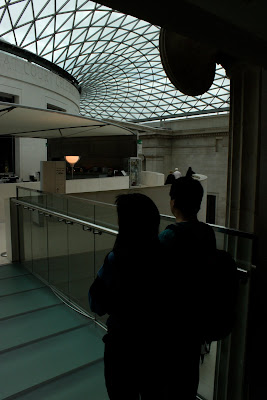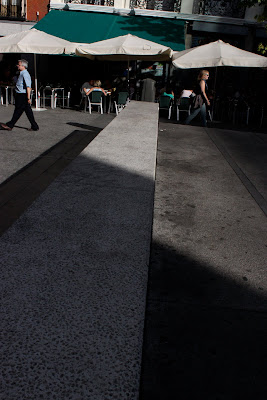Prado Itineraries and the Great Court of London, by the Windowless Consultant






We still don't know what the city is. Flesh, stone, or idea, space or word, practice or representation, a mixture of these or something else that they result from, more spiritual, more instinctive or explained by an enlarged idea of the biological, encompassing the social life of ants. Ultimately definable or not, though, it must be lived, and, as part of that life is its description, definitions, however partial, must be attempted.




The solution found by our fellow citizens at Oxford is a 750 word preamble, a grand tour of historical uses before so much as entering the treacherous terrain of definition proper.




Those seeking to establish whether it's stone or idea might visit the British Museum's Great Court. With this rebuilding, the architect, Norman Foster seeks to draw a line through central London, between the British Library to the North, and the riverside/Trafalgar Square attractions to the South: a 'New Heritage Route', he suggests, shading it onto a map in demonstration. An idea, a name, practices, a long line through stone, processional route for tourists, crossed daily and unperceived by inhabitants, recognised only by the relevant planning bodies or those seeking their language to commission, build or describe.




I came here via Madrid, the Passeo del Prado, at first sight a more identifiable entity in its Baroque rhetoric, linking the Reina Sophia to the Thyssen-Bornemisza around the Prado itself.




The idea was inspiration for a London window on a historical Spanish theme, the paintings there to help me, a flamenco night, the streets, plazas, bars, the food, habits, conversation.



My work in windows is self-assured, as it must be if I'm to survive by it, hence this blog, where everything less certain is collected, conglomerates, everything of or pertaining to the city.




The standard Prado guide is admirable in its clarity and, within reasonable limitations, detail. There's no such thing as Spanish painting, any more than there is Italian, Flemish, French or Dutch, as the Passeo del Prado complex is one of the best places to discover. Rather, there are tendencies, investigations, exchanges, discoveries shared, interpreted, forgotten or relearnt by more or less itinerant workers responding to the needs of more or less international clients, working, within and across ever-changing borders, under the rambling movements of battling dynasties.





El Greco's colours, we come to see, came from Venice, where they landed with the dyes from the trade overseas, his space, tormented, fragmented, and without centre, more a spiralling Tintoretto than anything closer to his anyway adopted Toledo. Goya looked to the Flemish, of course, especially to the works garnered by dominating Spain, not only for the portraits, but even in his darkest nightmares. Velasquez' proximity with Rubens is well documented, with Titian, and if there's one certainty to lie in Las Meninas, it concerns the fluidity of space, its changes over time, the defining place of perspective, representation, in who you are, of where you stand. The monarch is standing before it, the viewer, being painted, Philip IV in flip flops and shorts, unconsciously posing for Thomas Struth, wondering whether they grasp it, before the next one, with an audio guide.




I can't be the only one going abroad who on arriving experiences uncertainty about whether they've left. The language is different, the buildings, faces, streets, practices, space, but it's still language, building, streets, practices, space, still here. Whatever the Dutch at Breda made of their Spanish conquerors, the Spanish of the conquering French, may have been largely irrelevant to the maps being drawn and redrawn around them. The places would stay there, the stones, not least the practices, the stories told there and about them, would develop as they remained the same.




The great museums and galleries of Europe perhaps invite, though each in their own way, each just like the others, the same populations, trading flip flops in one place for umbrellas in another, restless drifting sitters, to tableaux musical chairs. Viewed from what perspectives do the cities expand around them mere wings?








































